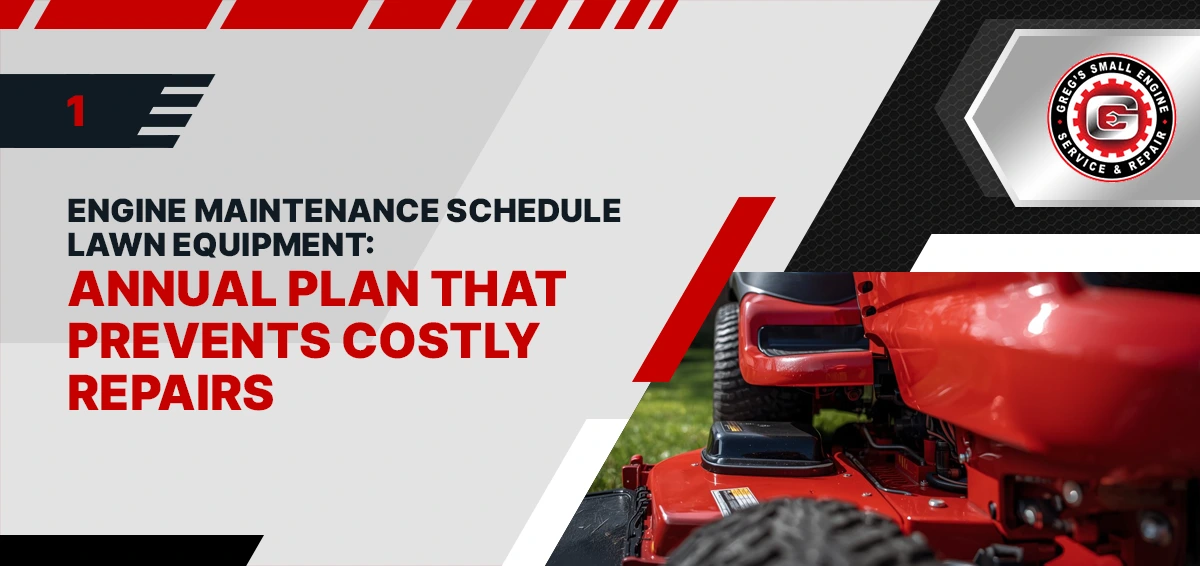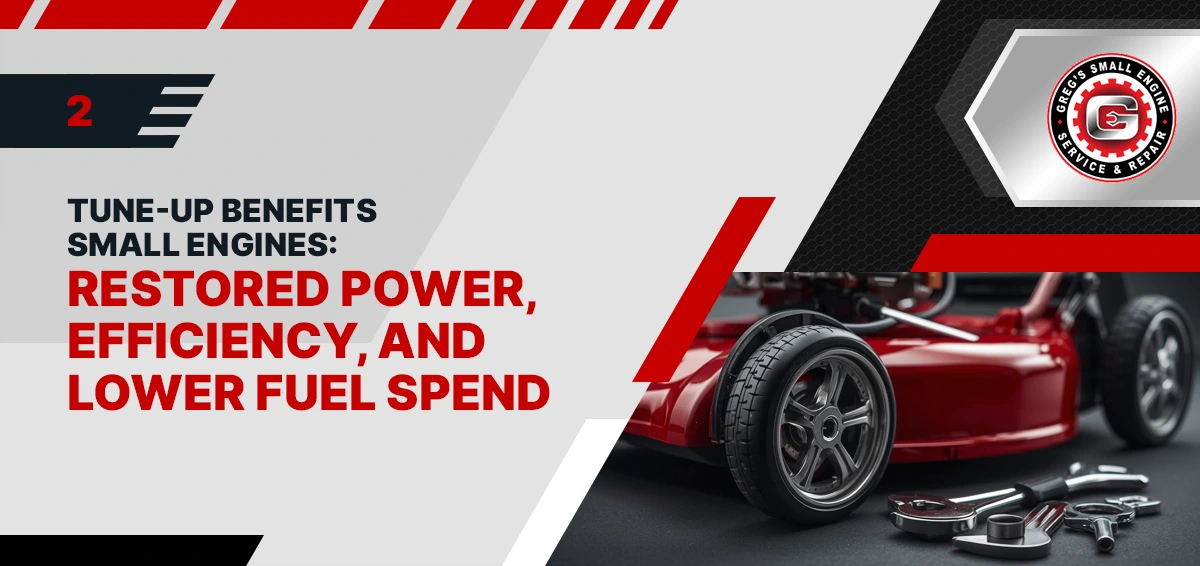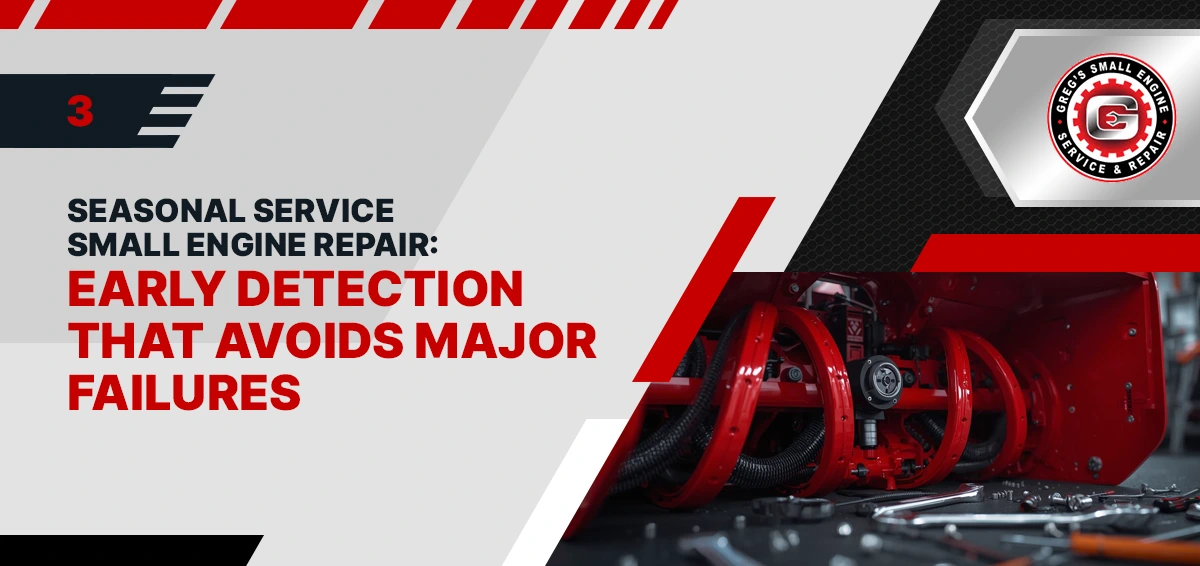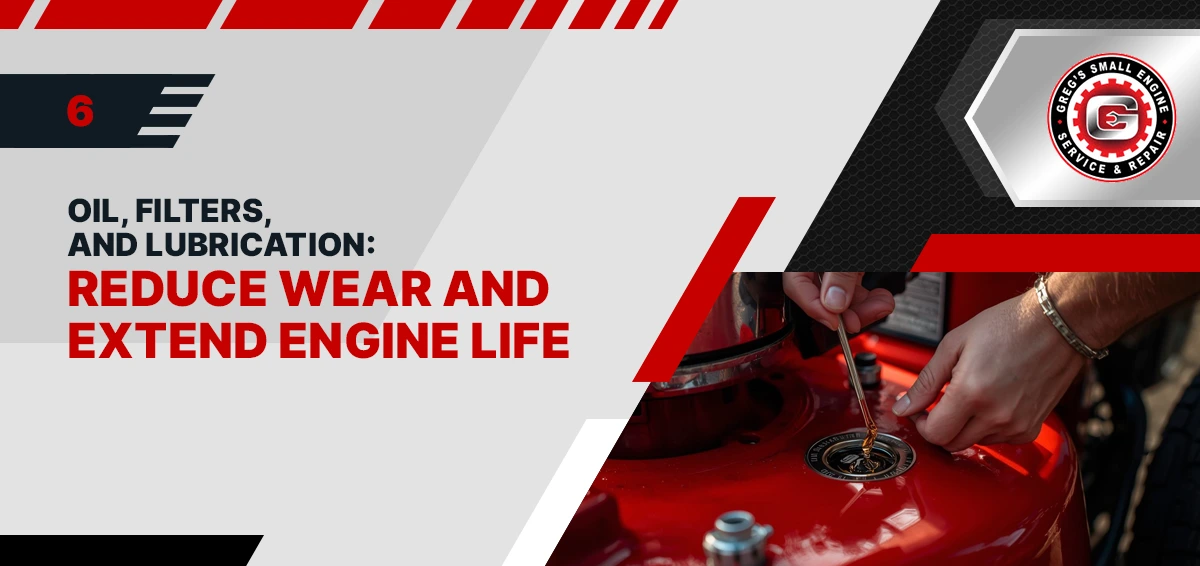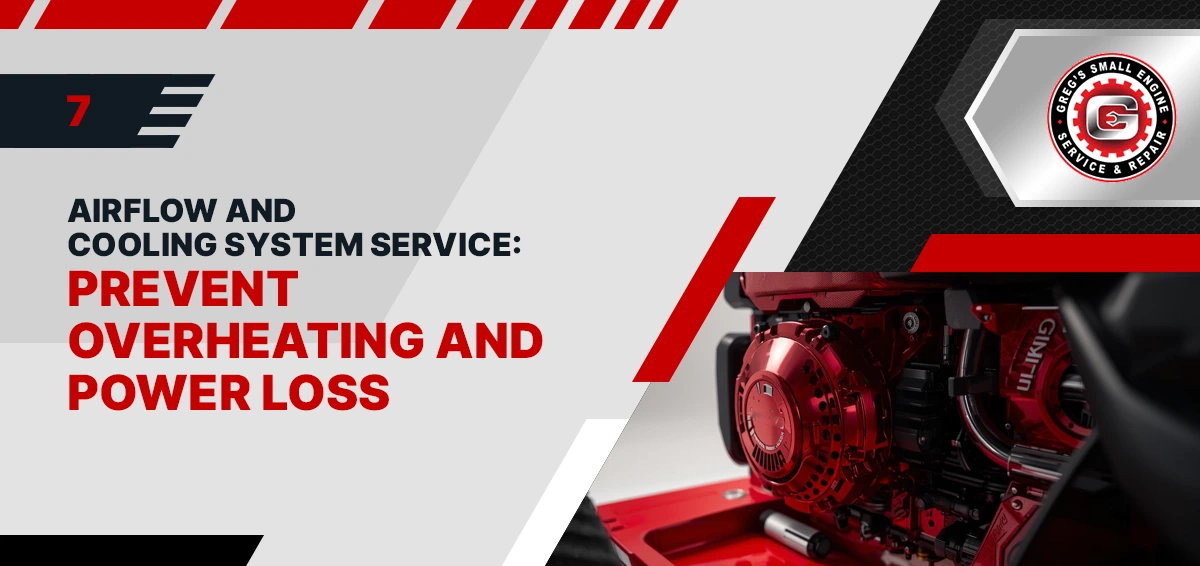 The small engine tune-up cost in Reno, NV, is a strategic investment that prevents expensive breakdowns and extends equipment life. Seasonal tune-ups address the most common failure points before heavy use, ensuring clean fuel systems, sharp blades, correct spark and ignition, proper lubrication, and air flow. This proactive maintenance reduces parts wear, stabilizes performance, and improves fuel efficiency—lowering operating costs throughout the season.
The small engine tune-up cost in Reno, NV, is a strategic investment that prevents expensive breakdowns and extends equipment life. Seasonal tune-ups address the most common failure points before heavy use, ensuring clean fuel systems, sharp blades, correct spark and ignition, proper lubrication, and air flow. This proactive maintenance reduces parts wear, stabilizes performance, and improves fuel efficiency—lowering operating costs throughout the season.
It also minimizes downtime during peak mowing or snow seasons, safeguards warranties, and helps avoid emergency repair premiums. By restoring factory-level settings and replacing aging components on schedule, tune-ups protect engines from cumulative damage and sustain reliable starts, consistent power, and longer service life.
1. Engine Maintenance Schedule Lawn Equipment: Annual Plan That Prevents Costly Repairs
A structured annual plan reduces failures, preserves performance, and lowers lifetime service costs. Use the following schedule as a baseline and adjust to the manufacturer’s intervals and hours of use.
Early Spring (pre-season):
- Complete tune-up: spark plug, air filter, oil and filter, fuel filter.
- Carburetor inspection and cleaning; fresh fuel with stabilizer.
- Blade or auger service and belt, cable, and drive checks.
Mid-Season (after 25–50 hours):
- Oil change and air filter inspection or replacement.
- Deck cleaning, fastener re-torque, and tire pressure check.
- Battery voltage and charging system test.
Late Fall (post-season for mowers):
- Fuel system fogging or run-dry procedure per OEM guidance.
- Corrosion protection: clean, dry, and lubricate pivots and bearings.
- Record hours and parts replaced.
Winter Equipment (pre-storm):
- Shear pins, scraper bar, skids, and belt condition check.
- Fresh plug, ethanol-safe fuel, and choke/throttle verification.
Address hard starts, power loss, or vibration immediately to prevent secondary damage.
2. Tune-Up Benefits Small Engines: Restored Power, Efficiency, And Lower Fuel Spend
A complete tune-up reverses performance losses caused by fouled plugs, restricted airflow, degraded fuel, and worn linkage settings. Correcting these issues improves combustion quality and reduces mechanical load, translating to stronger output and lower operating costs.
Key outcomes include:
- Restored power and throttle response: New spark plug, cleaned carburetor jets, and correct governor settings stabilize RPM under load.
- Improved fuel efficiency: Fresh filters, accurate idle and mixture adjustments, and sharp blades or properly set augers reduce fuel consumption per task.
- Reliable starting in all seasons: Verified choke operation, battery and charging checks, and clean ignition components shorten start time.
- Lower wear and heat: Correct oil grade, fresh lubrication points, and unobstructed cooling shrouds minimize friction and overheating.
- Reduced unplanned repairs: Early detection of belt wear, cable stretch, bearing noise, or fuel leaks prevents collateral damage to costly components.
Consistent tune-ups extend service life, maintain manufacturer performance specifications, and preserve warranty eligibility through documented maintenance.
3 Seasonal Service Small Engine Repair: Early Detection That Avoids Major Failures
Pre-season inspection: Identify wear before peak demand. Verify compression, spark quality, and fuel delivery. Inspect belts, cables, bearings, and safety interlocks. Replace marginal parts that could fail under load.
Mid-season checkpoint: Catch progressive issues early. Confirm oil level and condition, air filter restriction, blade balance or auger alignment, and cooling shroud cleanliness. Listen for bearing noise and governor hunting. Tighten fasteners and recheck torque points.
Post-season assessment: Prevent off-season deterioration. Document starting behavior, power output, and vibrations. Drain or stabilize fuel, fog cylinders where specified, and lubricate pivot points. Tag units with service notes for next season.
Common failures prevented:
- Overheating from clogged fins or shrouds
- Carburetor varnish and hard starts from stale fuel
- Belt and pulley damage from misalignment or fraying
- Crankshaft and deck damage from unbalanced blades
- Cable and drive system failure from stretching or corrosion
Scheduled seasonal service reduces emergency breakdowns, extends component life, and lowers total repair costs.
4. Fuel System And Carburetor Cleaning: Stop Gumming And Hard Starts
Why cleaning matters: Ethanol-blended fuel absorbs moisture and oxidizes, forming varnish that clogs jets, passageways, and needles. Deposits restrict fuel flow, causing hard starts, surging, stalling under load, and elevated emissions.
Service steps:
- Drain stale fuel; inspect tank for rust or debris.
- Replace the inline fuel filter and cracked fuel lines.
- Remove carburetor bowl; clean float, needle, and seat.
- Clear main and pilot jets with approved cleaners and non-marring probes; use ultrasonic cleaning when necessary.
- Install fresh gaskets; verify float height and needle sealing.
- Reassemble and set idle speed and mixture to manufacturer specifications; confirm governor and choke operation.
Quality checks: Perform cold and hot starts, monitor RPM stability under load, and inspect for leaks at fittings and the bowl gasket. Verify spark plug color for proper mixture.
Prevention tips: Use fresh, ethanol-free fuel, or add stabilizer at every fill. Run equipment monthly during storage, or drain the system per OEM guidance to prevent varnish formation.
5. Spark, Ignition, And Battery Checks: Ensure Reliable Starts And Fewer Emergencies
Spark plug service: Remove and inspect for fouling or glazing. Verify heat range, clean threads, and set gap to specification. Replace if electrode wear, cracked insulator, or oil fouling is present.
Ignition system tests: Confirm a strong blue spark with an inline tester. Check coil primary and secondary resistance, inspect kill-switch circuit and wiring continuity, and verify flywheel key integrity to maintain correct timing. Examine ignition switch function and safety interlocks for consistent shutdown and start authorization.
Battery and starting circuit: Perform open-circuit voltage and load tests. Clean terminals, tighten hardware, and verify solid engine and frame grounds. Measure charging output at governed RPM to assess stator and regulator performance. Inspect starter motor draw, solenoid operation, and cable condition.
Cold-start readiness: Validate choke and primer operation, fuel enrichment paths, and cranking speed. Apply dielectric grease to high-moisture connectors.
Preventive schedule: Test monthly during heavy use and before storage. Document readings, replace marginal components, and correct wiring issues to prevent no-start events and field failures.
6. Oil, Filters, And Lubrication: Reduce Wear And Extend Engine Life
Oil selection and intervals: Use the viscosity and specification listed by the manufacturer. Change oil at the initial break-in interval, then every 25–50 hours or at each season change, whichever comes first. Warm the engine before draining to suspend contaminants.
Filter service: Replace the oil filter at every oil change. Inspect the air filter more frequently in dusty conditions; replace paper elements when restricted, and clean foam pre-filters with approved detergent and oiling procedures. Confirm the fuel filter is clear and properly oriented.
Lubrication points: Apply high-quality grease to wheel bearings, pivot points, throttle and choke linkages, and auger or mower deck spindles where fittings exist. Lubricate cables and exposed threads to prevent corrosion and binding.
Quality checks: After refill, verify the oil level with the dipstick on a level surface. Start the engine, check for leaks at the drain, filter base, and fittings, and then recheck the level. Record the date, hours, oil grade, and filter part numbers. A consistent lubrication program lowers friction, disperses heat, and slows component wear.
7. Airflow And Cooling System Service: Prevent Overheating And Power Loss
Debris removal and inspection: Clear grass, leaves, and dust from the engine screen, flywheel intake, cylinder fins, and shrouds. Remove caked debris from the mower deck and snow blower housings to restore the designed airflow paths.
Air filter and intake sealing: Inspect the filter for restriction and damage. Per OEM guidance, replace paper elements when discolored or deformed and service foam pre-filters. Check intake boots, clamps, and air box gaskets to eliminate unmetered air that skews the mixture.
Cooling components and guards: Verify shroud alignment, fastener torque, and the integrity of baffles that direct air across hot zones. Confirm the flywheel screen and recoil housing are secure and free of dents that impede flow.
Deck and housing efficiency: Level the mower deck, balance blades, and set the proper cutting height to reduce engine load. For snow blowers, inspect impeller clearance, chute alignment, and scraper bar height.
Performance checks: Monitor head temperature trends, listen for RPM hunting, and confirm stable power under load. Document findings and correct deficiencies immediately.
8. Blades, Augers, And Drive Adjustments: Protect Belts, Gearboxes, And Bearings
Cutting and throwing components: Inspect mower blades for nicks, bends, and thickness loss. Sharpen to correct angle, balance on a cone or balancer, and torque mounting hardware to specification. For snow blowers, check auger flighting for deformation, impeller clearance, and chute alignment to maintain smooth material flow.
Shear pins and fasteners: Replace worn or mismatched shear pins with OEM parts. Verify all auger and impeller fasteners are present and tightened to prevent shock loads on the gearbox.
Drive belts and pulleys: Measure belt width and glazing. Set belt tension and pulley alignment to avoid slip and heat buildup. Replace cracked or stretched belts and confirm idler and brake arm travel.
Bearings and bushings: Rotate spindles and auger shafts by hand to feel for roughness. Grease serviceable bearings, replace sealed units with play or noise, and confirm dust seals are intact.
Cable and linkage adjustments: Set traction and blade engagement cables to the manufacturer’s free-play. Verify neutral, drive engagement, and safety interlock function. Proper adjustments reduce load spikes that damage belts, gearboxes, and bearings.
9. Fasteners, Deck, And Safety Systems: Prevent Damage And Compliance Issues
Structural fasteners and torque: Inspect all engine, frame, handle, and deck fasteners for looseness, stretch, or corrosion. Replace missing hardware with correct grade components and apply threadlocker where specified. Torque blade bolts, spindle nuts, chute, and auger hardware to manufacturer values to prevent vibration, misalignment, and component fatigue.
Deck and housing integrity: Clean packed debris, then check the mower deck for cracks, bent baffles, and uneven hangers. Level the deck side-to-side and front-to-back, verify anti-scalp wheel height, and confirm belt guards are present. On snow blowers, inspect housings, scraper bars, and skid shoes for even wear and correct clearance to protect gearboxes and surfaces.
Safety interlocks and guards: Test operator-presence controls, blade brake clutch, neutral/park start circuits, and kill switches. Confirm discharge chutes, belt and pulley shields, belt finger guides, and muffler heat shields are intact and secured. Verify warning labels are readable and spark arrestor screens (where equipped) are clean.
Documentation: Record torque checks, replaced hardware, and safety test results to demonstrate maintenance compliance and reduce liability.
10. Off-Season Storage And Fuel Stabilization: Preserve Components And Warranty
Fuel strategy: Choose one method per OEM guidance.
Stabilize and store: Fill the tank with fresh fuel, add stabilizer at the correct ratio, and run 5–10 minutes to circulate through the carburetor.
Run dry and fog: Shut the fuel valve, run until stall, drain the bowl, then fog cylinders with storage oil to prevent corrosion.
Moisture and corrosion control: Clean equipment thoroughly, dry all surfaces, and lubricate pivots, cables, and exposed threads. Apply light oil to bare metal and use dielectric grease on connectors. Store in a dry, ventilated area away from fertilizers or chemicals that release corrosive vapors.
Battery and electrical: Disconnect or remove the battery. Label and maintain the charge date with a smart tender. Inspect and protect terminals and grounds.
Mechanical protection: Before storage, level mower decks, relieve belt tension, and replace worn scraper bars and skid shoes on snow blowers. Cover machines with breathable covers.
Documentation: Log stabilizer brand, ratios, and service steps. Keep receipts and records to verify maintenance compliance and preserve warranty coverage.
Conclusion
Seasonal tune-ups prevent cumulative wear, extend service life, and reduce the likelihood of high-cost breakdowns. Addressing fuel quality, ignition reliability, airflow and cooling, lubrication, and drive alignment restores factory performance and keeps operating temperatures in the optimal range. Documented service also supports warranty compliance and preserves resale value. The result is fewer emergency visits, shorter downtime during peak mowing or snow events, and lower total cost of ownership across the equipment fleet. For homeowners and property managers in Northern Nevada, a disciplined maintenance plan delivers measurable savings compared to deferred repairs and premature replacements.
For a professional assessment and a clear plan that aligns with your equipment hours and seasonal demands, contact Greg’s Small Engine. Call 775-790-0435 or schedule through the contact page: https://gregsmallengine.com/contact-us/


